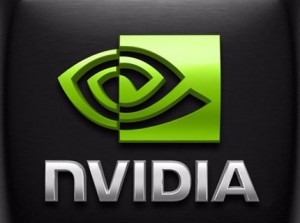 Graphics giant NVIDIA is planning to take videogames to the cloud with a new rack server that is optimized for computer graphics. The server, which is dubbed NVIDIA Grid, works in tandem with software on a client device. This allows games with graphics and complexity on par with current generation console and PC titles to be streamed from the servers to a remote client – it’s essentially videogames in the cloud.
Graphics giant NVIDIA is planning to take videogames to the cloud with a new rack server that is optimized for computer graphics. The server, which is dubbed NVIDIA Grid, works in tandem with software on a client device. This allows games with graphics and complexity on par with current generation console and PC titles to be streamed from the servers to a remote client – it’s essentially videogames in the cloud.
Existing Cloud Based Gaming
Currently, videogames already employ the cloud to some extent. For example, Steam games, Windows Live, Xbox Live, and the Playstation Network allow games to upload data on the cloud so that gamers don’t have to bring their entire device if they want to access their games somewhere else. But this approach is limited, as only small files like game saves, high scores, and records of achievement are transferred. The actual game files are still stored locally via the hard disk or a game disc.
With NVIDIA’s Grid, there will no longer be any need for a game disc or a locally-stored game. Everything will be on the cloud and will be streamed. This means the local client doesn’t need a powerful hardware anymore. They just need enough horsepower to be able to stream the game content and send input signals, basically just a lot of bandwidth. All the computing and rendering will be done on NVIDIA’s servers.
Power Under the Hood
A single Grid that is held steady through a rack will contain 240 of the company’s graphics processing units and will be able to crunch 200 teraflops. Each of these nodes can accomodate 24 concurrent user, with the entire server estimated to have the same performance as 729 Xbox 360s.
In order to demonstrate the capabilities of the nVidia Grid, the company staged a demonstration wherein a game was streamed and played on an LG flatscreen and a netbook computer. This is very impressive considering that netbooks are notoriously underpowered, with weak CPUs and GPUs that have “barely-there” 3D capabilities.
NVIDIA is now using the equipment to stress test it along with collaborators in other parts for the world, such as Agawi in the U.S., Cloudunion and Cyber Cloud in China, G-cluster in Japan, Playcast in Israel, and Ubitus in South Korea.
Is NVIDIA Doing it Right?
Cloud based gaming solves two different problems with traditional videogame hardware. First is that it allows console makers to sell underpowered hardware, which is cheap to produce and can be sold for a profit. Currently, videogame console manufacturers (with the exception of Nintendo) are selling consoles for a loss, banking on making it back through software sales and reduction of costs once the materials become cheap over time and volume. With cloud based gaming, the companies can make a profit as soon as the first console is bought.
The next problem addressed by the Grid is on the PC side of things; with cloud based gaming, users will no longer have to worry about getting high end videocards and upgrading every couple of months just to keep up with the latest games. With underpowered hardware, they can play the most beautiful and complex games because all the horsepower needed will be handled by NVIDIA’s servers.
The main problem with cloud based gaming is not with what it brings, but rather with what it doesn’t have yet: infrastructure. The one thing that a cloud-based videogame will need is lots of bandwidth as the back and forth between the client and the server must have little to no latency. Otherwise, gaming would be unenjoyable as button presses and other controls would be inaccurate.
Traditional videogames can be played online because there’s very little data to send back and forth. All the computation – from the graphics, physics, etc – are done locally. Essentially, only a summary of what has happened locally is transmitted, with the receiving system using it to compute the results on its end. This is why traditional videogaming requires a lot of horsepower.
When gaming is done via the cloud, all the computation will be done by the cloud, and all of that data will be received by the client. The process doesn’t need a lot of horsepower locally, but it requires a lot of bandwidth. Right now, very few gamers have Internet connections that can support the type of HD quality games that are seen on consoles and PCs.
Additionally, it also becomes a matter of cost for the server. The type of computing power necessary to serve millions of gamers all playing at once is going to cost NVIDIA a lot on hardware, maintenance, and bandwidth. They’d have to balance all of these costs with how much they’re going to charge for the service, otherwise they’re going to fold sooner than later. Ultimately, gamers don’t care about the technology under the hood. They just want a nice game and a service that’s affordable – if nVidia doesn’t find a way to provide that, gamers would rather go back to non-cloud based gaming.